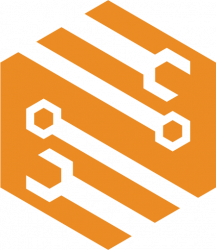To use the X-Carve (or any other tool in the Red Zone), you need to be trained in person by the lab manager, Brandon Stafford. Reading this page is a good start, but it does not grant you permission to operate the machine.
General safety procedures
The X-Carve is in the red zone, so you should be following all of the Red Zone safety procedures in the Nolop Safety Policy. This means stuff like wearing safety glasses, non-loose clothing, and the like. Read the full policy for the details.
Safety procedures specific to the X-Carve
- Wear safety glasses. The major danger is that the bit will break, and a broken piece of metal will fly into your eye.
- Put up your hair, necklaces, and such. If you lean over to get a close look at what’s happening, your hair could get tangled in the cutter, and your head could get pulled in. See, for example, the death of Michele Dufault in the Yale chemistry department.
- Make sure the thing your cutting is clamped well. If it starts to move, the bit will likely get overloaded and break, and your part will probably be ruined.
- When the router spindle is on, keep everything out of the cutting area. This means your fingers, but also vacuum hoses, scraps of wood or plastic, or anything else you might think to stick in there. If you feel the need to stick something in there, you’ll have to stop the machine first.
- Don’t leave the machine alone. If something goes wrong, you have to be there to hit the emergency stop button. It can get a little boring, yes.
- Make sure the dust collector is running and that the dust shoe is at the right height. The collector should start automatically when you turn on the spindle. You have to clean up the dust anyway, and if you can keep the fine particulates out of the air that would be better for all of us.
- If you’re using the machine regularly, wear hearing protection. Long-term exposure to machine noise will damage your hearing.
- Be careful swapping bits. They’re really sharp. Wearing gloves around rotating machinery is not safe, so use a rag or a paper towel to protect your hands.

